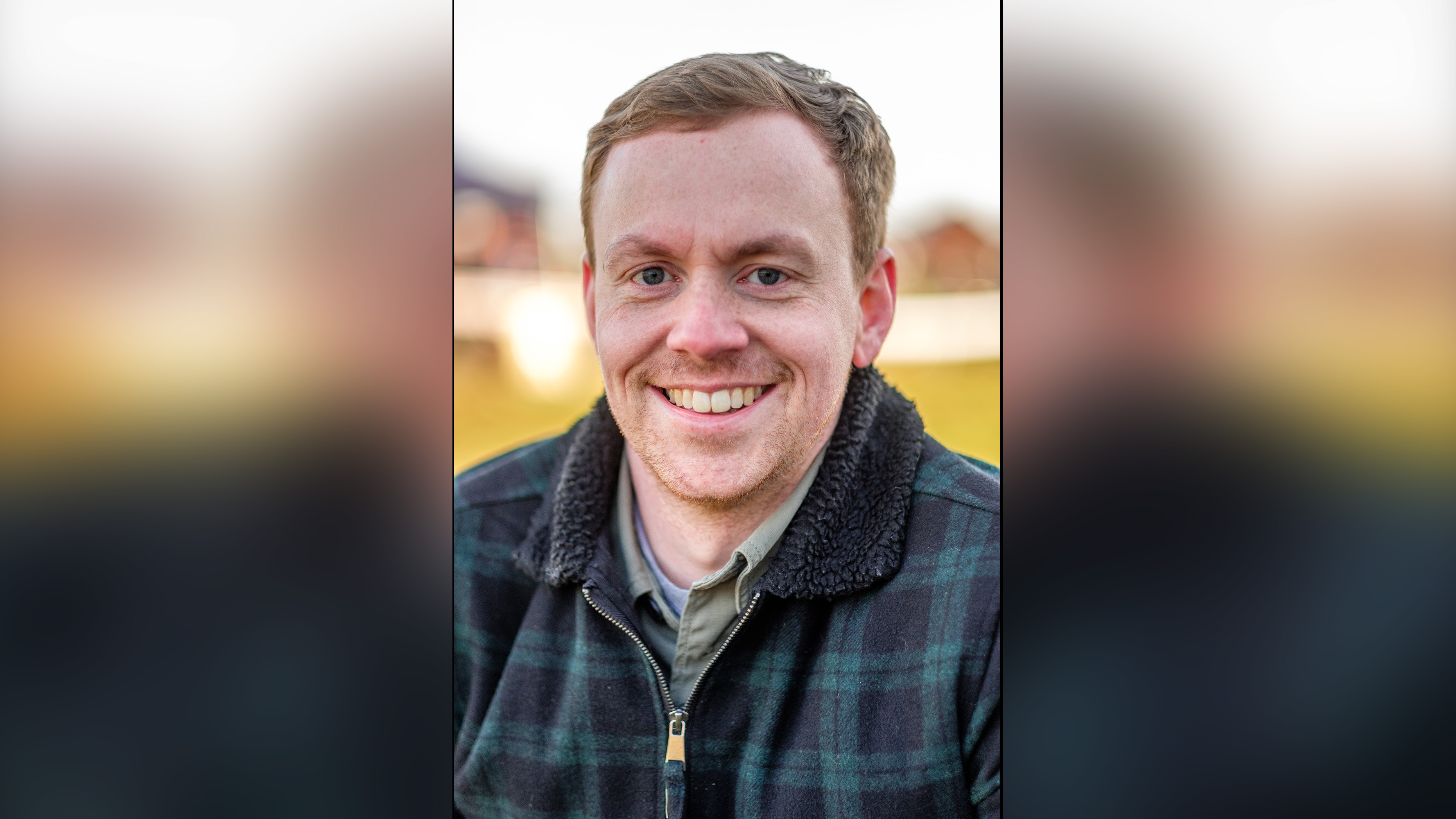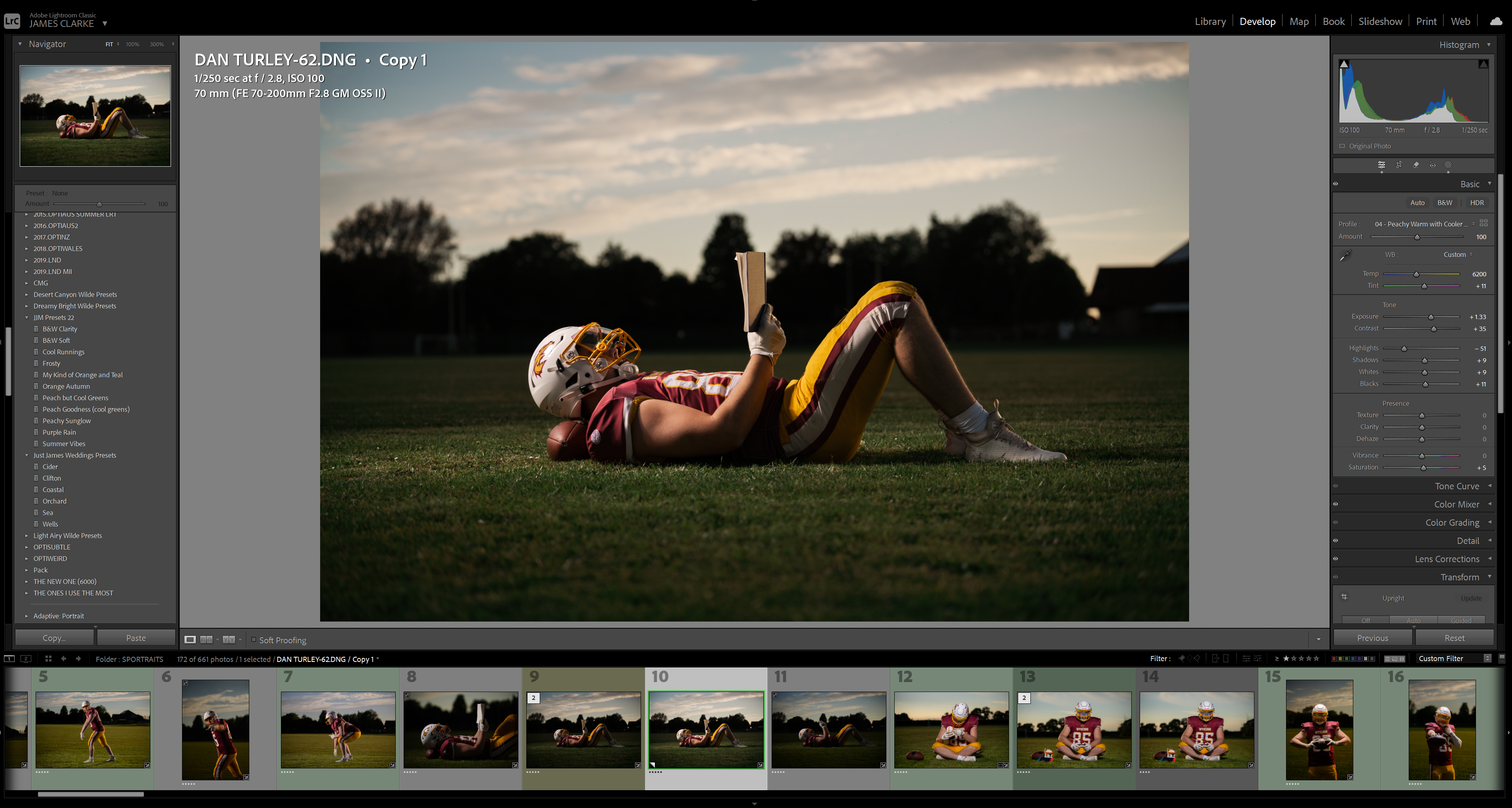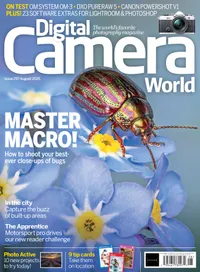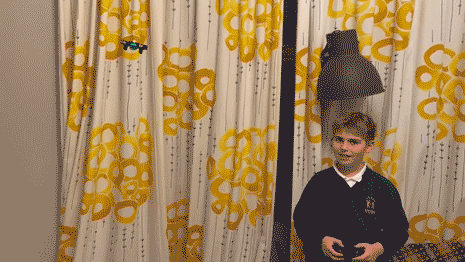How one photographer is bringing the US 'Sportrait' style to British turf
Professional photographer James Clarke has imported an American style of sporting portraiture. We see how it plays out on the other side of the Atlantic
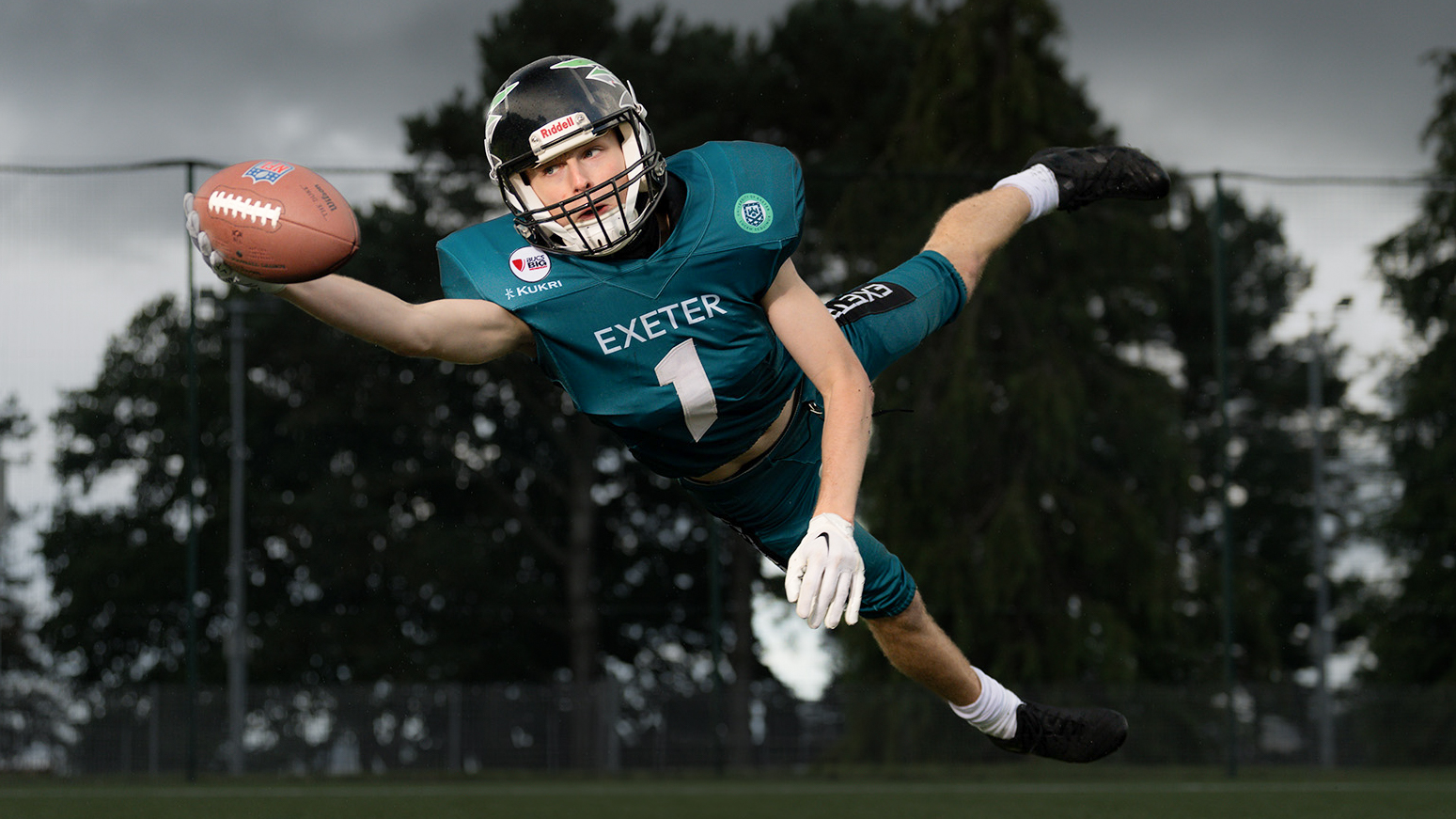
Question: what do you get if you have a sports player posing for a stylised portrait photo? A ‘sportrait’, that’s what. It’s not a genre we’d come across before in Digital Camera Towers, so we were surprised and delighted to discover that a practitioner of sportraits was based within 100 miles of us – and not on the other side of the pond. James Clarke is a big fan of American sport and sporting culture and has imported ‘sportraiture’, for want of a better word, to the UK. He has also given it his own twist, eschewing the studio shoot approach of the US variant and opting instead to work with the athletes on the playing field, to give his photos extra context.
One of these locations is Exeter University, where Clarke has teamed up with the Exeter Demons, BUCS [British Universities and Colleges Sport] Division 1 National Champions 2023-2024. On this occasion, Clarke was taking photographs for the Demons to use in their recruiting drive for the new academic year, and he invited Digital Camera along for kick-off.
James Clarke, photographer
Specializing in shooting sport and fitness, and as passionate about photography as he is about sport, Clarke can draw on over two decades of experience in the sporting world. www.justjamesmedia.com.
What is a sportrait?
“A sportrait is simply a portrait but in sports kit,” explains Clarke. “It can be static, like most of the shots today, or it can be dynamic action – in some of today’s pictures, someone was throwing a ball in the air and someone was diving onto a mat and catching it.
“For me, especially the way I want to shoot them, a sportrait is also about showing off people’s hobbies while they’re in sports kit. While that wasn’t what we were doing today, on a previous shoot I’ve photographed someone reading a book with their sports kit on, which captured their personality quite well.
“Sportraits are really big in America, obviously, not just at professional level but also in university sports and all the way down to junior level at high schools.”
“For this style of photography, I need the background to be as dark as possible, which I do via shutter speed. Once I’m happy with the setting, I use an ND [neutral-density] filter to overpower the sun, which I’m using as an extra light source. When I’m happy with how the natural light levels are looking, I’ll switch on the lights. Now I’m getting a dark background and shadows, with the lights making the subject pop.”
The best camera deals, reviews, product advice, and unmissable photography news, direct to your inbox!
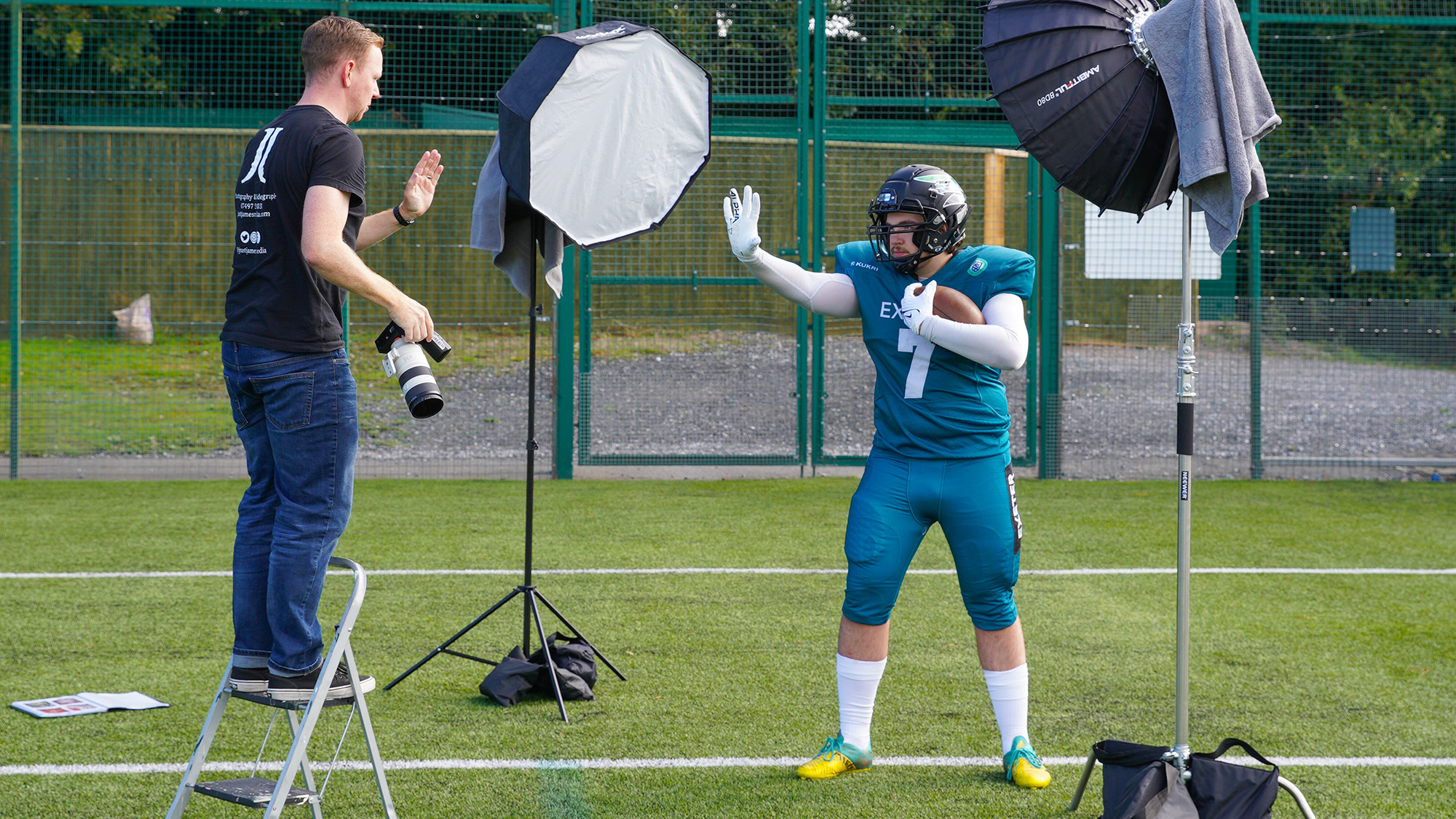
Setting the equipment up
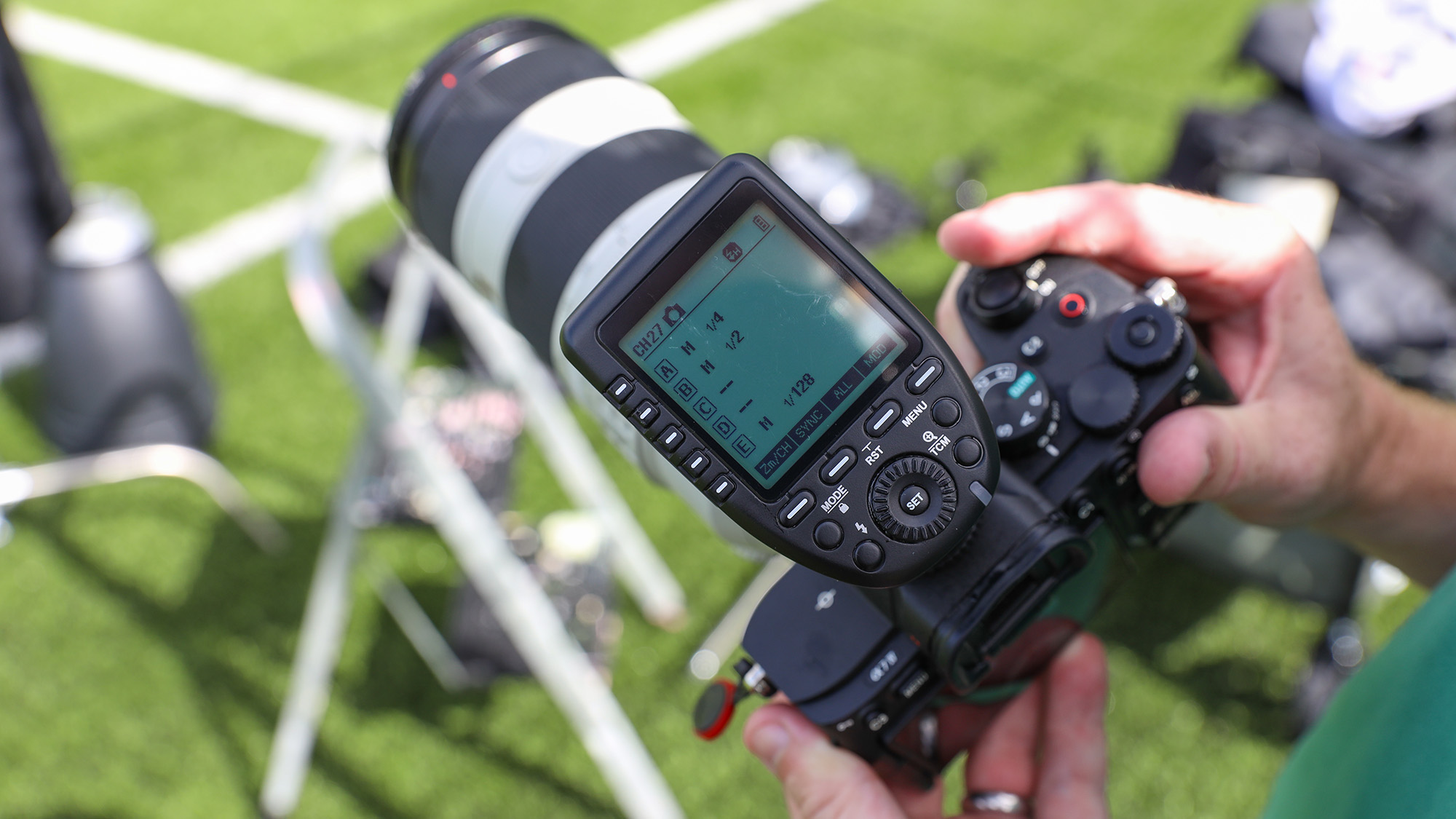
Setting the equipment up
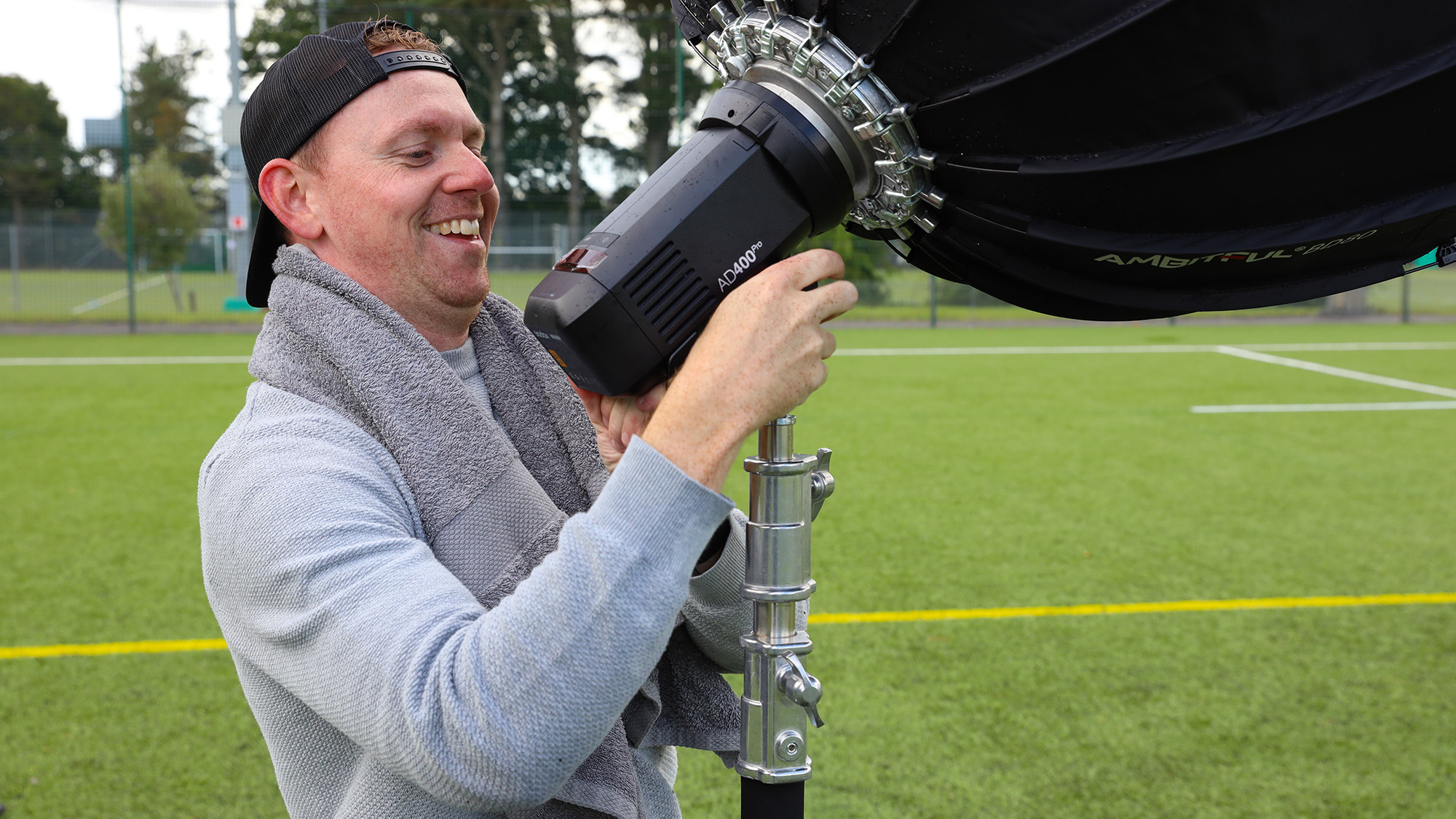
Setting the equipment up

Setting the equipment up
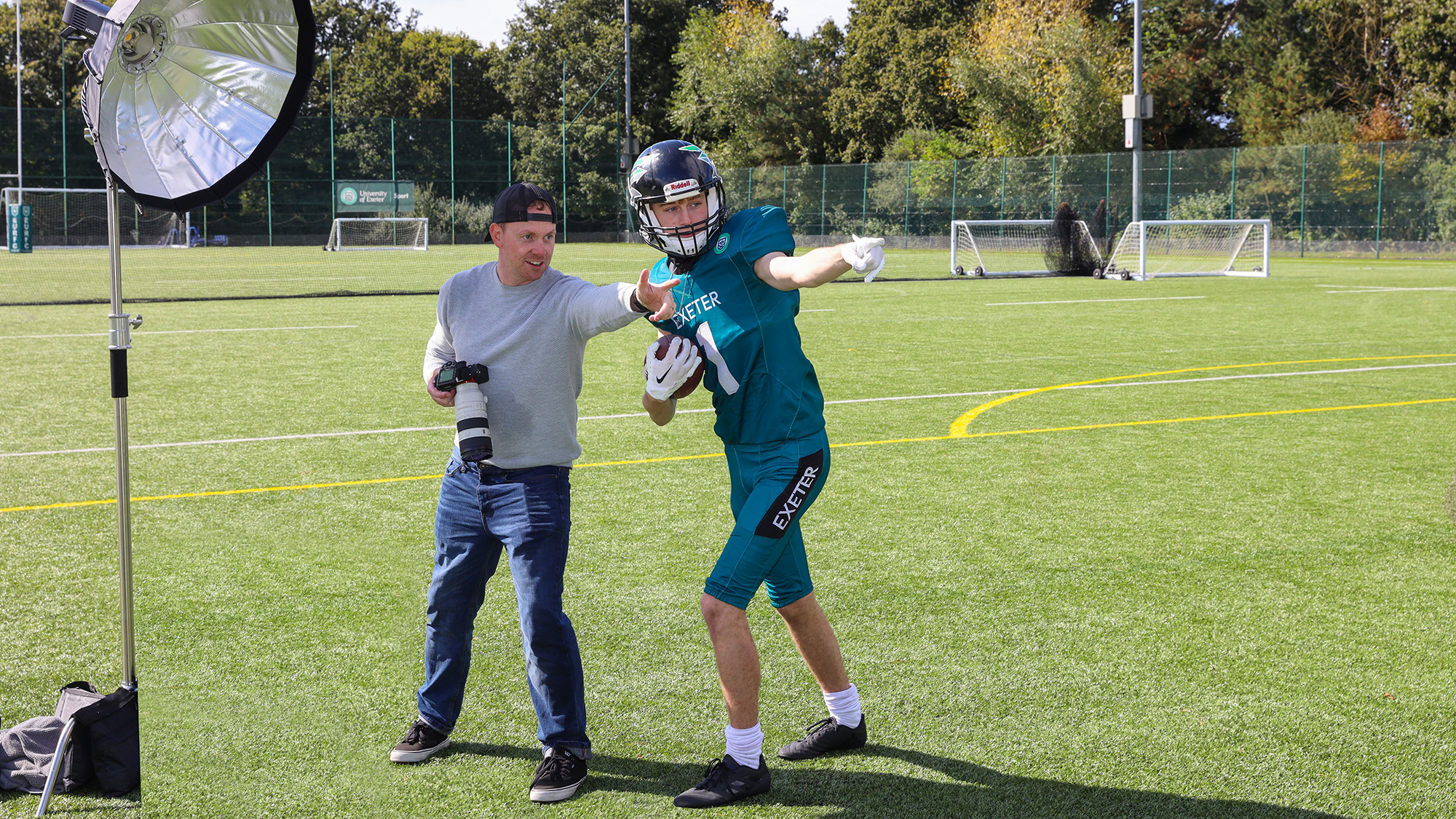
Setting the equipment up

Setting the equipment up
When I arrive at the appointed time, Clarke has already set up his equipment and is about to get started. Nine players from the Demons have shown up to be photographed, and Clarke will run through a variety of setups with them over the next five hours.
Key to how things will pan out today is his ‘look book’, something often seen at fashion shoots, where the photographer and creative director choose from a series of photos or drawings how they want the individual shots to look like. Today’s options range from static shots to action shots, all of which will be captured on the pristine astroturf pitch and using the relevant props. Having put the look book together, Clarke can interpret what his models want, and suggest alternatives if he feels the requests are unachievable.
Shooting his sportraits on location means that Clarke has to bring a car boot full of kit and caboodle with him – cameras, lenses, lights, light stands, softbox diffusers and more – and hope that the weather he is banking on plays along. The initial signs are promising, as the sun that Clarke needs for the shoot (see ‘The technical bit’, left) is shining.
Having captured a series of static shots of the Demons, who have each indicated their preferences from the lookbook, Clarke moves on to start the dynamic ones. The weather decides to get in on the action, too; the benign conditions I arrived in have given way to gusty showers, and now I can see why Clarke has packed bath towels with his camera kit. Rather than dismantling his lights while it rains, and putting them up again afterwards, he drapes towels over them.
Despite the challenging conditions – so far, we’ve had three seasons in one day, and it keeps cycling between them – Clarke works quickly and methodically, and his energy levels rub off on his subjects. He comes across like a sports coach with a camera, directing the players and swatting problems away as they occur – like a light stand that succumbs to the wind.
So why has he diversified from fitness and wedding photography to sportraits, I ask? “It stems from me being inspired by American sports and loving photography,” he explains. “There are lots of people who do sportraits in the US, and three in particular who inspire me. But I’m not aware of anyone who does it this way in the UK – there are some who shoot sportraits in studios, so to do it like this is pretty unique, I think.”
I bet Clarke wishes he was working in a studio right now, as the other softbox catches a big gust and topples over. But he doesn’t seem unduly fazed – this is probably less frantic than shooting a wedding, after all.
The action shots certainly lift the mood caused by the change in the weather. Clarke moves through capturing a series of setups – kicking a field goal, where one player kicks the ball held by a teammate; a vertical catch, where the ball falls into the centre of the frame from a distance; a dynamic catch, where the player dives horizontally to catch the ball, with a mat underneath to cushion his fall; and releasing the ball from a scrum – reminiscent of rugby union were it not for the shoulder pads, helmets and gloves.
Some of the action routines that Clarke is trying to capture are more complex than others, but the Demons players are well-drilled, and deliver what he needs with determination and efficiency.
There’s a line of thought that says you should photograph what you love (and it can be noticeable if you don’t). This is clearly in evidence today. Clarke’s knowledge of the sport and his command of its lingo is impressive for a layperson like myself to witness. There are discussions about the D-line, the O-line, offence and defence. If my ears aren’t playing tricks on me, I think that Clarke is starting to sound like an American.
“Yes!” he laughs. “I lived in the States for three-and-a-half years and followed football, baseball and basketball – probably in that order. When I came back to live in the UK, it took me a while to find American football, but there are three leagues here, plus a women’s league and a university league. So American football is growing in popularity in the UK.”
But sportraits aren’t limited to American football. The practice and style of sportraits might have emanated in the US, but it can work for any sport, enthuses Clarke, and the formula isn’t a rigid one.
For the last shot of the day, which isn’t a sportrait but one for the Exeter Demons photo album and social media accounts, nine Demons line up at the edge of the pitch in arrow-tip formation and stretch an arm out, a ring on each of their ring fingers – American football teams that win competitions or championships are given rings as a memento of the achievement, and Clarke crouches down to capture a signature American football image.
Getting a glimpse into gridiron has made for a fun morning, and it has also been great to get up close with a new and unfamiliar photographic genre. Touchdown!
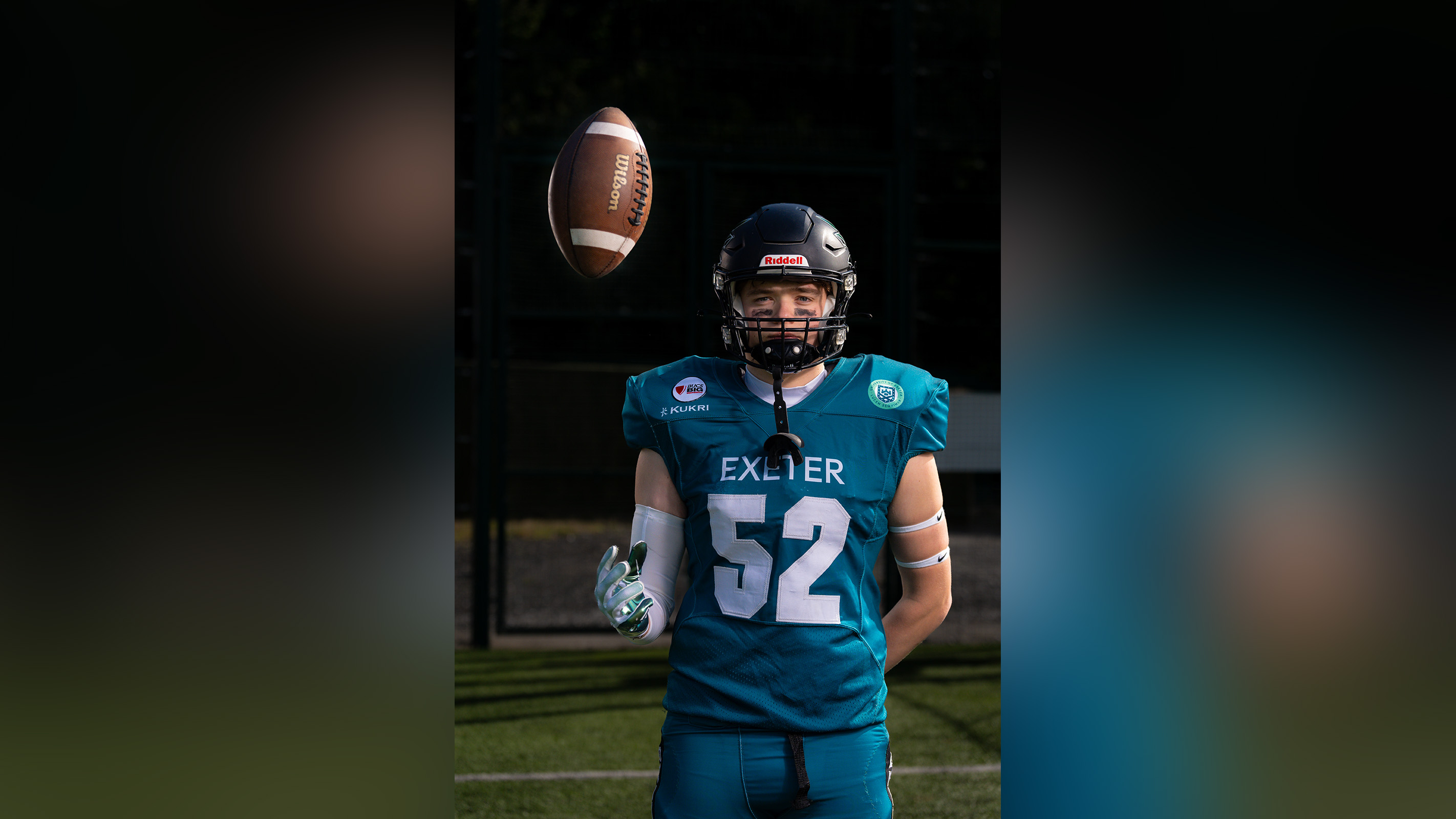
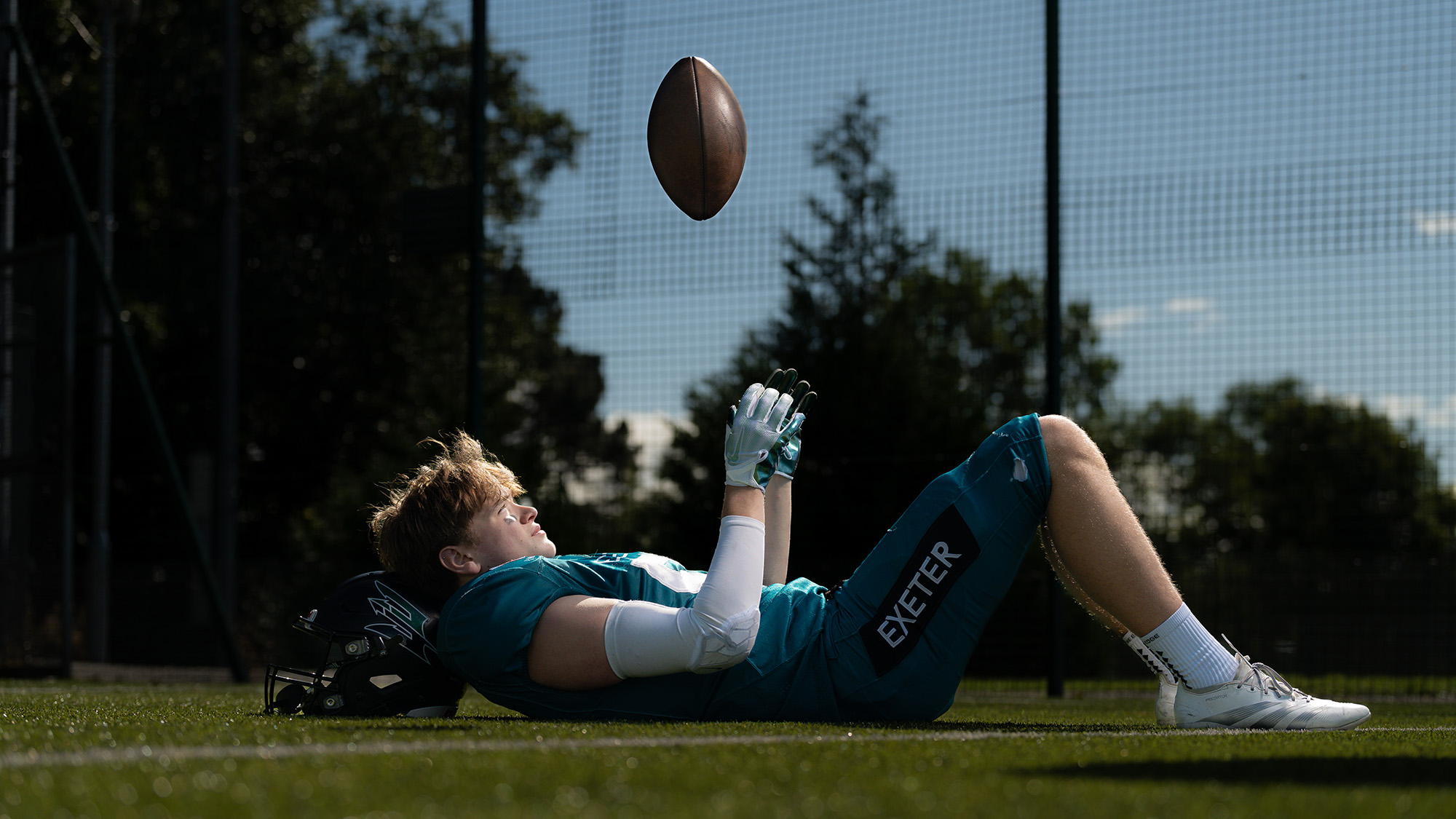
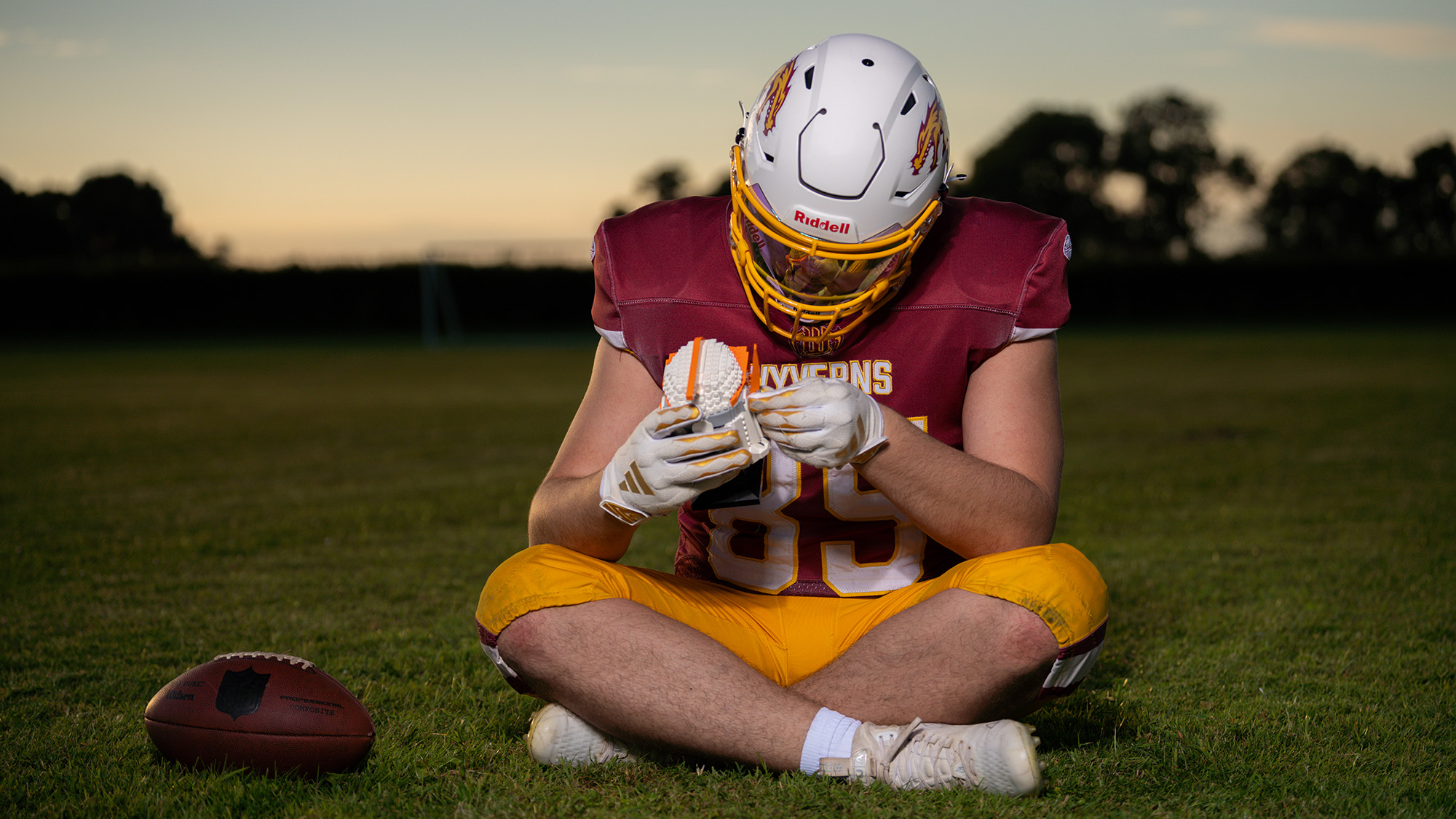
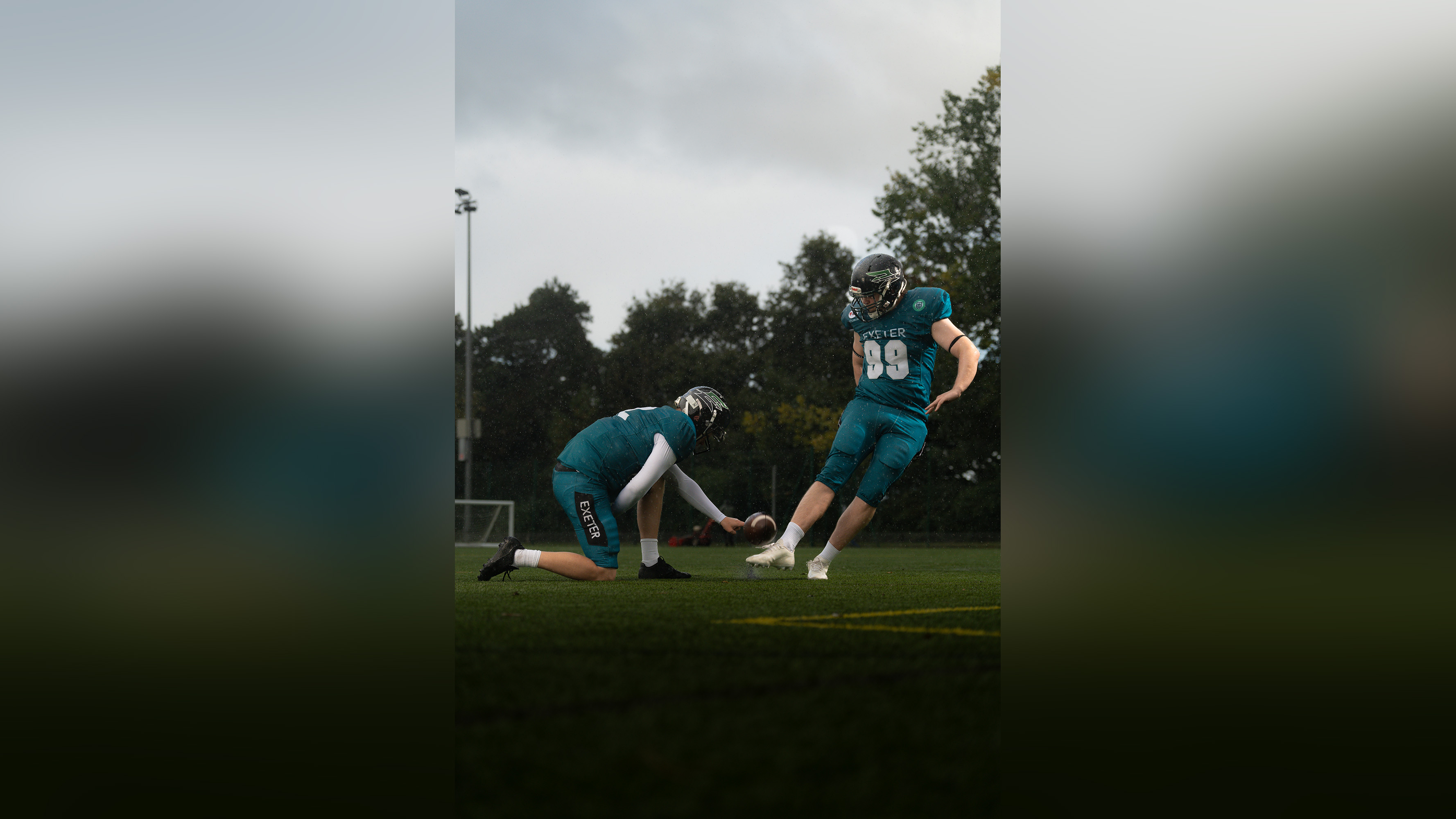
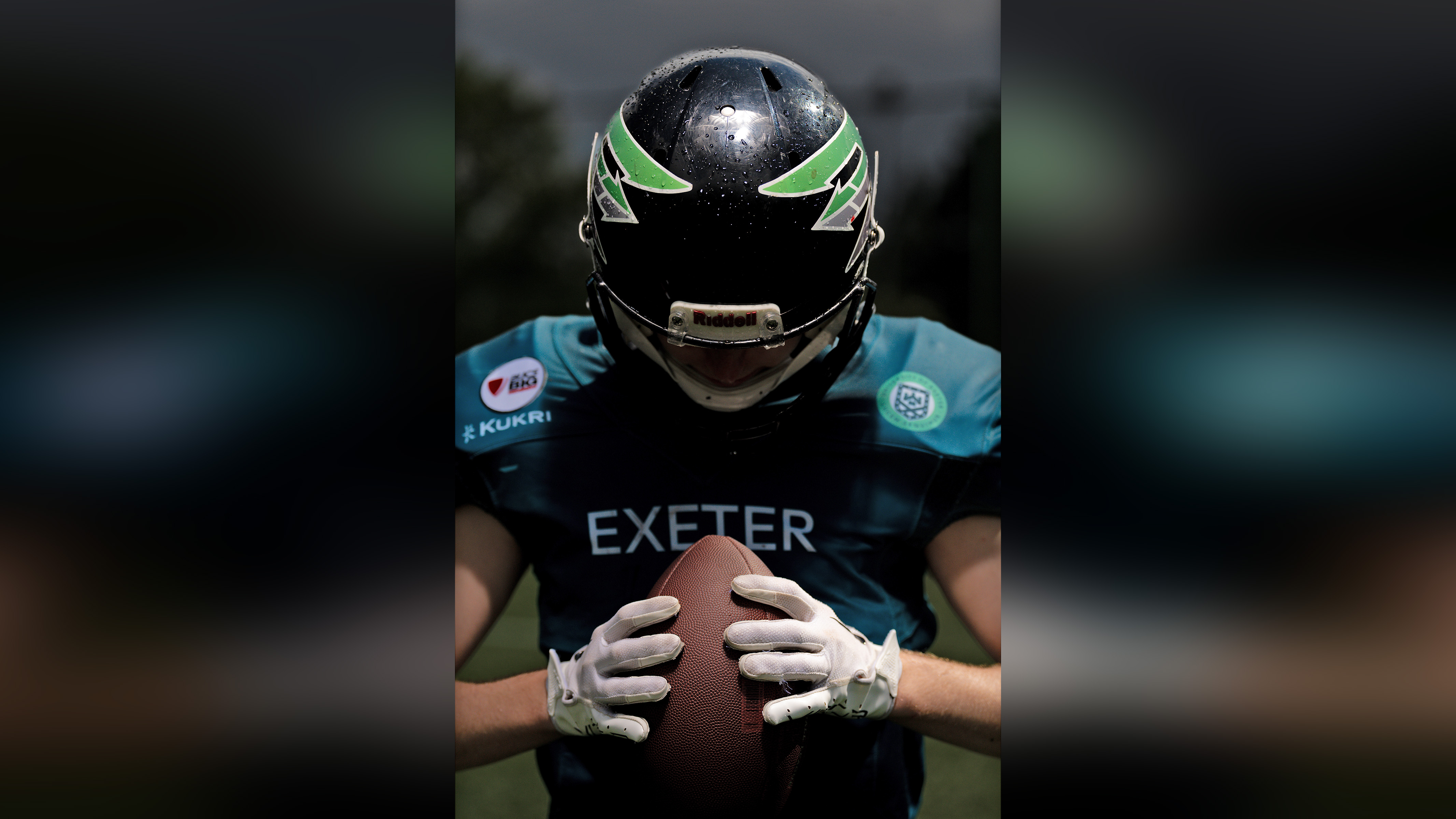
Essential kit for shooting sportraits
Our pro’s tried and tested equipment:
“Its 33MP resolution is enough for today’s shoot, and its flip-out screen lets me get down low on the ground. It’s also a great camera in testing light conditions.”
Sony FE 70-200mm f/2.8 GM OSS II
“The main lens I’m using today. The Mark II is a lot lighter than the original version, and the autofocus is way better. I had to get used to the aperture ring to start with!”
“A variable ND [neutral-density] filter is more help than a fixed one. For some shots I set it to two stops, whereas others were all the way up to 32 stops.”
Godox XPro
“This is the wireless trigger that comes with the Godox AD200 flash, but it does the job well. I use it to fire my AD200 – and my AD400, which is really powerful.”
“This lens is light and affordable, and it’s my second-favourite focal length. Some people are sniffy about third-party optics, but Samyang lenses are decent quality.”
“I love this focal length and the image quality of this lens. It’s affordable, too, so Sony shooters needing a decent 35mm prime should get one of these.”
How to shoot superb sportraits
“You need to use a camera that performs well at high shutter speeds. You don’t need to adjust the ISO because you can just adjust flash power, so keep the ISO low and the shutter speed fast.”
“Know the sports you’re photographing. Knowing the lingo and certain positions will help you create a better relationship with the subject or model in front of you.”
“The photographers who inspire me get into each team or individual’s story. One works with Navy football in the US, and all his shoots take place on aircraft carriers or submarines, so for this style you don’t have to be based in a studio.”
“You don’t need an expensive lighting setup – you can shoot sportraits with one speedlight and a diffuser – but it needs to be strong enough to overpower the sun and make the background dark.”
“If you get it right in-camera, there isn’t too much editing to do. I tend to darken the background (if needed) or boost contrast, or darken certain parts with linear gradients, but it’s mostly just applying a preset.”
Digital Camera World is the world’s favorite photography magazine and is packed with the latest news, reviews, tutorials, expert buying advice, tips and inspiring images. Plus, every issue comes with a selection of bonus gifts of interest to photographers of all abilities.
You may be interested in...
Check out our guide to the best cameras for sports photography, and the best photography lighting kits

Niall is the editor of Digital Camera Magazine, and has been shooting on interchangeable lens cameras for over 20 years, and on various point-and-shoot models for years before that.
Working alongside professional photographers for many years as a jobbing journalist gave Niall the curiosity to also start working on the other side of the lens. These days his favored shooting subjects include wildlife, travel and street photography, and he also enjoys dabbling with studio still life.
On the site you will see him writing photographer profiles, asking questions for Q&As and interviews, reporting on the latest and most noteworthy photography competitions, and sharing his knowledge on website building.
- Wendy EvansTechnique Editor, Digital Camera magazine
You must confirm your public display name before commenting
Please logout and then login again, you will then be prompted to enter your display name.
